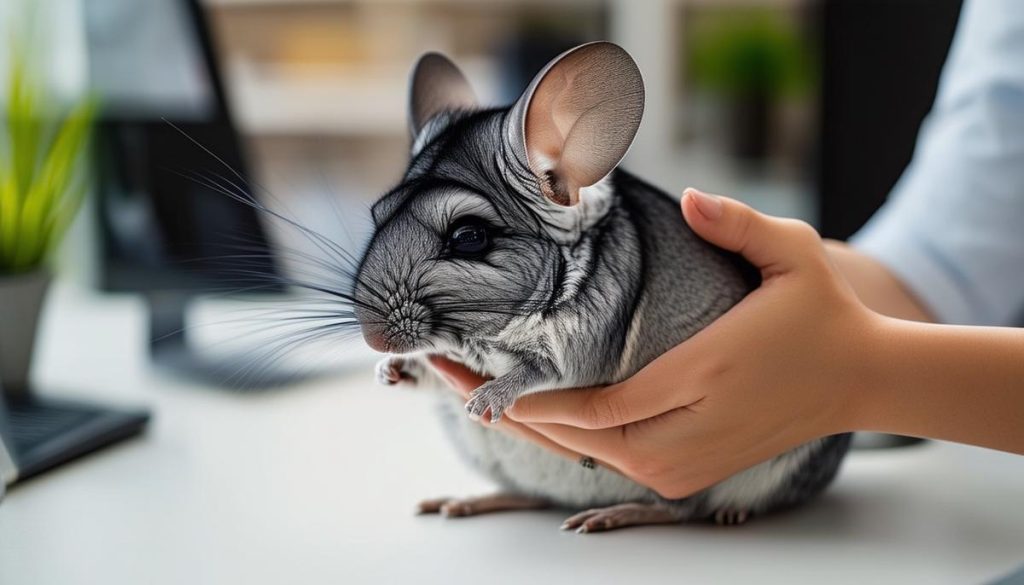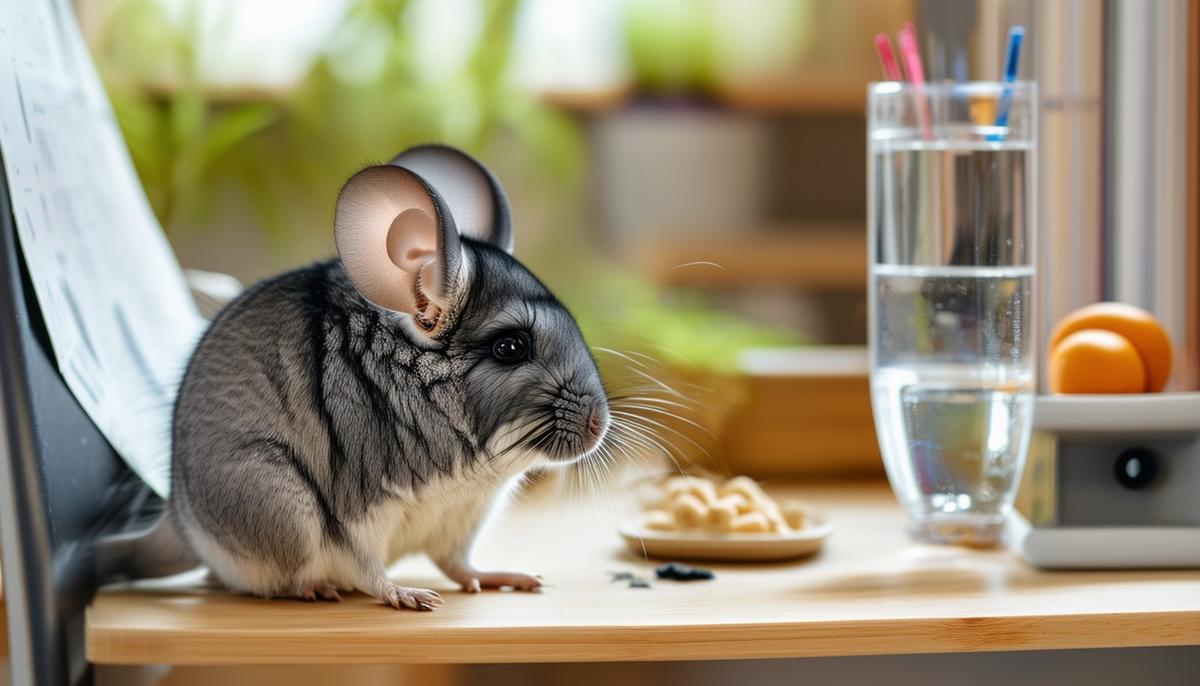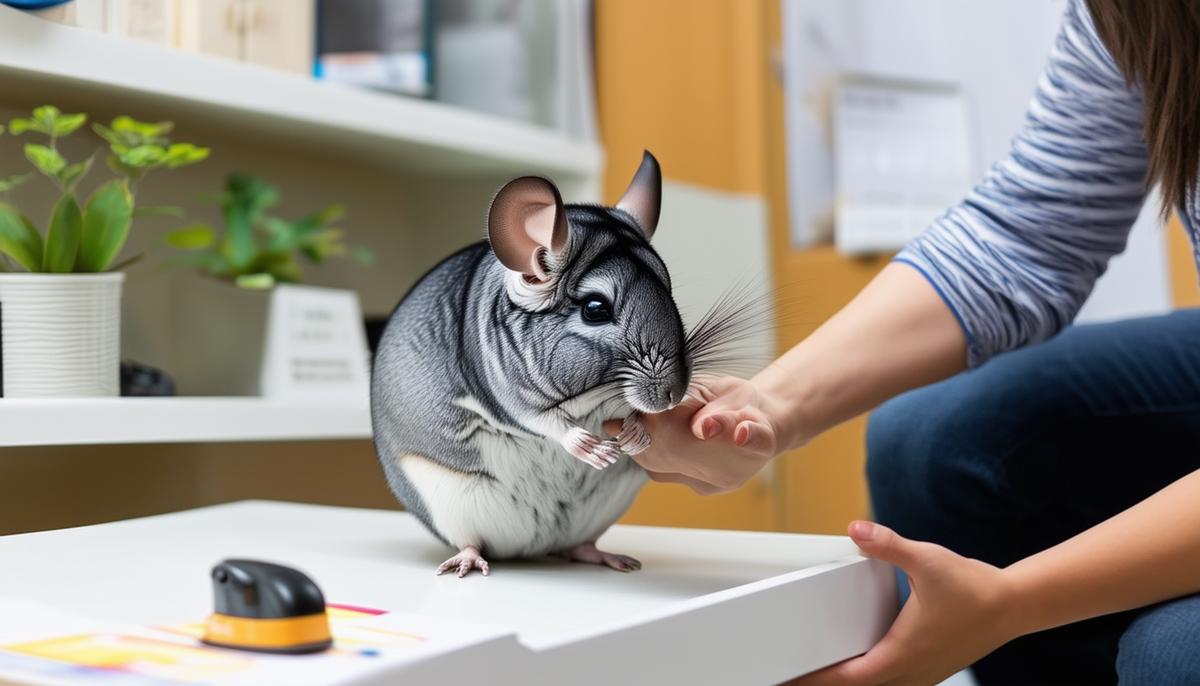Handling Chinchillas at Work

Can chinchillas be handled at your workplace?
Chinchillas can be interacted with in a workplace environment when their specific requirements are met. They flourish in a calm setting with access to essential provisions like food, water, and sufficient space for their activities. Given that chinchillas generally prefer not to be lifted, it’s advisable to let them initiate contact at their own pace. Using treats to foster trust can foster a positive relationship. When handling them, it’s important to handle them gently and ensure all four feet are supported to reduce stress and avoid injury.
What are the risks of handling chinchillas at work?
Handling chinchillas at work poses risks such as injuries due to their fragile bones and potential stress responses. If not properly socialized, they may bite or display erratic behavior. Loud noises or a chaotic environment can further stress chinchillas, leading to fur-chewing or other harmful habits.
How should chinchillas be handled safely at work?
Handle chinchillas safely by allowing them to climb onto your hand rather than scooping them up abruptly. Support all four feet and use your other hand to secure the base of the tail. Keep interactions calm and quiet, minimizing sudden movements and loud noises. Always handle them close to the ground to prevent falls.
Can children at work handle chinchillas?
It’s important that children do not handle chinchillas without supervision. If permitted, ensure the child is seated and instructed on how to gently support the animal’s feet. Close supervision is necessary to prevent accidental injuries caused by tight grips or sudden movements.

What are the risks of handling chinchillas at work?
Handling chinchillas at work introduces several risks. These animals are prone to stress due to their sensitive nature. Loud noises, chaotic environments, or improper handling can lead to stress, causing behaviors such as hiding or chewing fur. Watch for changes in their feeding and toileting habits, which can indicate stress or fear.
Injuries are another risk when handling chinchillas improperly. Their delicate bones can easily fracture from overzealous or tight holds. Always support all four feet and handle them close to the ground to prevent falls. Be aware of signs of stress, including reluctance to move or patches of fur coming away during handling.
Chinchillas need undisturbed sleep during the day as they are nocturnal. Interrupting their rest can affect their health and well-being. Ensure a quiet, calm environment for their comfort.

How should chinchillas be handled safely at work?
Handling chinchillas at work requires prioritizing their safety. Allow chinchillas to approach you rather than chasing them. This reduces stress and builds trust.
- Scoop catch method: Slide your hands under the chinchilla from front to back, lifting gently while supporting all four feet. Avoid approaching from above, as this can be threatening to chinchillas.
- Tail grab method: Gently hold the chinchilla’s tail at the base, close to the body. Don’t swing the chinchilla by its tail or hold it too far from the base, as this can cause injuries. Once the tail is secured, use your other hand to support the chinchilla’s body.
For both adults and kits (baby chinchillas), ensure all four feet are supported. Adults can rest their feet on one arm or be held against your chest. Kits are more fragile, so handle one at a time, using both hands to cup around its body.
Keep interactions calm and gentle. Sudden movements and loud noises can easily scare chinchillas, increasing the risk of stress-related behaviors.

Can children at work handle chinchillas?
Children handling chinchillas at work requires care and supervision. Never let a child handle a chinchilla unsupervised. Have the child seated on the floor or a sofa to minimize the risk of falls. Place the chinchilla gently into the child’s arms, ensuring all four feet are supported.
Teach the child to handle the chinchilla gently and respectfully. Children must avoid tight grips and sudden movements. Encourage them to let go if the chinchilla starts to wiggle or appears distressed.
"Educate children on the importance of supporting the chinchilla's entire body. Demonstrate how to cup the chinchilla with both hands, ensuring that its feet are firmly supported on their lap or arm."
Show them how to hold gently across the shoulders or at the base of the tail, but stress that they must never swing or lift the chinchilla inappropriately.
With proper supervision and guidance, children can have a rewarding interaction while learning to respect and care for small animals. The key is consistent, careful oversight by a knowledgeable adult, ensuring a positive experience for both the chinchilla and the child.

- Quesenberry KE, Carpenter JW. Ferrets, Rabbits, and Rodents: Clinical Medicine and Surgery. 3rd ed. Elsevier; 2012.
- Meredith A, Johnson-Delaney C. BSAVA Manual of Exotic Pets. 5th ed. British Small Animal Veterinary Association; 2010.
- Kubiak M. Handbook of Exotic Pet Medicine. Wiley Blackwell; 2020.

